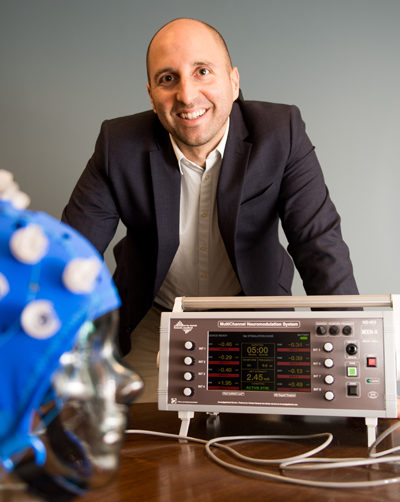Nicely done (for a media outlet) six week experiment to test efficacy of HaloNeuro‘s Halo Sport tDCS device. Elise’s takeaway is that she wishes the effect was a little more dramatic. But her trainer tells her that extra 1-1/2″ is actually significant. Certainly in pro sports settings I’m sure it would be. Nice overview of hypothetical understanding of how tDCS works. She also interviews HaloNeuro co-founder Daniel Chao and Olympic volleyball athlete Kim Glass. Elise on Twitter
Why Can’t We Stimulate The Surface of the Brain Non-Invasively?
No doubt a naive question, but something I’m super-curious about.
Certain neurosurgeries require patients to remain awake in order to communicate with the surgeon. In this paper, Cingulum stimulation enhances positive affect and anxiolysis to facilitate awake craniotomy, the authors demonstrate that stimulation of “the left dorsal anterior cingulum bundle was discovered to reliably evoke positive affect”. A low current stimulation evoked a smile and a “really good feeling”.
Many years ago, perhaps even as a boy, I saw this clip of Wilder Penfield eliciting memories from brain surgery patients, and it really stuck with me. Probably the notion of one’s entire stream of consciousness existing somewhere in the brain waiting to be unlocked with a bit of stimulation is incorrect, but nevertheless, to hear these actual recordings of patients suddenly recalling events from their past is fascinating.
My question is, Why can’t non-invasive brain stimulation, like tDCS, evoke similar responses to those outlined in these two videos? If it’s that tDCS stimulates too broadly, then perhaps something like Temporal Interference (where stimulation occurs at the point where two frequencies meet) could be used to stimulate these areas. Certainly an experiment worth thinking about.
Electric stimulation ‘a promising advancement’ for reversing memory loss | CTV
CTV : Electric stimulation ‘a promising advancement’ for reversing memory loss
From NorthwesternNow: Brain stimulation reverses age-related memory loss
“Older people’s memory got better up to the level that we could no longer tell them apart from younger people,” said lead investigator Joel Voss, associate professor at Northwestern University Feinberg School of Medicine. “They got substantially better.”
We covered Joel Voss and related research in September of 2018
Stimulation Excites the Brain to Form Better Memories | NorthwesternU
Paper: Network-targeted stimulation engages neurobehavioral hallmarks of age-related memory decline
Not related directly with the research, but interesting to note in the video where Canadian researcher Jed Meltzer, a scientist at Baycrest Hospital’s Rotman Research Institute in Toronto is shown demonstrating an ActivaDose device and an unusual montage.
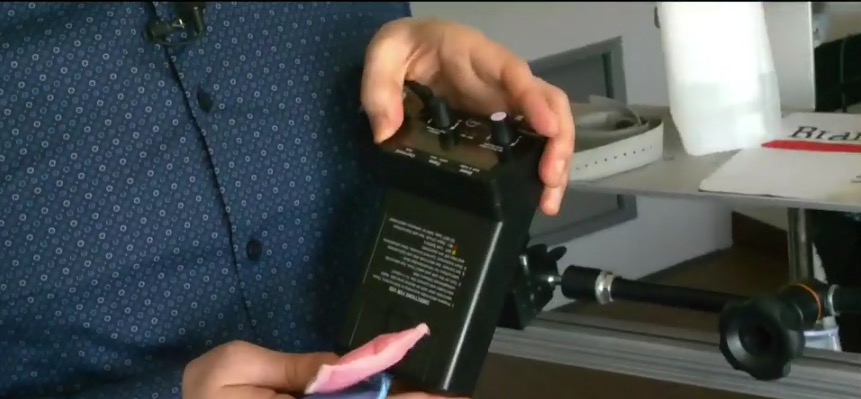
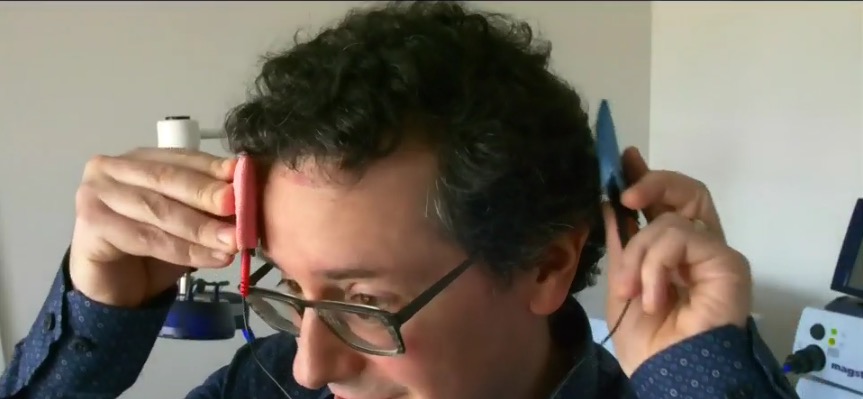
Ed Boyden Synthetic Neurobiology
Tyler Cowen interviews Ed Boyden of MIT in this excellent interview. (Seriously, listen to this interview).
Ed Boyden is a neuroscientist and his lab, Synthetic Neurobiology Group is serving up a steady stream of cutting edge brain research. Especially of interest to DIYtDCS viewers is his involvement in a new form of non-invasive brain stimulation able to reach deep into the brain…
The method, called temporal interference, involves beaming different electric frequencies, too high for neurons to respond to, from electrodes on the skull’s surface. The team found that where the currents intersected inside the brain, the frequencies interfered with each other, essentially canceling out all but the difference between them and leaving a low-frequency current that neurons in that location responded to, Dr. Boyden said.
NEW YORK TIMES New Electrical Brain Stimulation Technique Shows Promise in Mice
Paper: Noninvasive Deep Brain Stimulation via Temporally Interfering Electric Fields
But what really caught my ear in this interview was making the connection that Dr. Boyden is working with MIT neuroscientist Li-Huei Tsai. You’ll recall Dr. Tsai from earlier posts that discuss her work around treating Alzheimer’s using Gamma waves. Gamma Waves Enhance the Brain’s Immune System to Treat Mice with Alzheimer’s disease It turns out that Boyden and Tsai are working on a commercial venture that will explore this research together. The company is called Cognito Therapeutics.
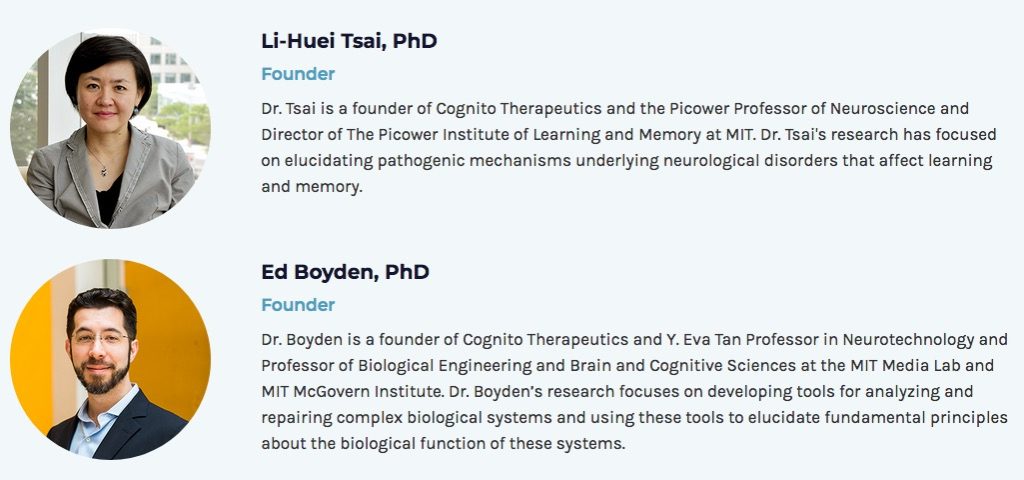
It’s still early days for Cognito, though they are recruiting for studies. I’ll be following along closely.
HD tACS to Synchronize Medial Frontal Cortex & Lateral Prefrontal Cortex Leads to Improved Executive Function
[Update 4/19] Reinhart Lab has a new paper out that is going to attract a lot of attention. Using HD-tACS, they were able to improve Working Memory in older adults (compared to younger adults). This article nicely summarizes the experiment: Brainwave Synchronization Reverses Age-related Decline in Working Memory …HD-tACS boosted interactions between theta & gamma rhythms in left temporal cortex & synchronization of theta brainwaves between left temporal cortex and prefrontal cortex. Paper: Working memory revived in older adults by synchronizing rhythmic brain circuits.
You may have noticed that I’ve not been posting as much to the blog lately. The blog is already so full of useful content for anyone looking into tDCS that I’m inclined to only post significant information that would move our current understanding of tDCS and neurostimulation forward. This article/paper describing a new technique using ‘HD tACS’ to synchronize (brainwaves) parts of the brain definitely looks intriguing and has implications for anyone paying attention to DIY neurostimulation. Very early, but very interesting.
Full story: “Turbo Charge” for Your Brain? by By Barbara Moran
“These (medial frontal cortex & lateral prefrontal cortex) are maybe the two most fundamental brain areas involved with executive function and self-control,” says Reinhart, who used a new technique called high-definition transcranial alternating current stimulation (HD-tACS) to stimulate these two regions with electrodes placed on a participant’s scalp. Using this new technology, he found that improving the synchronization of brain waves, or oscillations, between these two regions enhanced their communication with each other, allowing participants to perform better on laboratory tasks related to learning and self-control. Conversely, de-synchronizing or disrupting the timing of the brain waves in these regions impaired participants’ ability to learn and control their behavior, an effect that Reinhart could quickly fix by changing how he delivered the electrical stimulation. The work, published October 9, 2017, in the journal Proceedings of the National Academy of Sciences (PNAS), suggests that electrical stimulation can quickly—and reversibly—increase or decrease executive function in healthy people and change their behavior.
Here’s the paper (paywall): Disruption and rescue of interareal theta phase coupling and adaptive behavior. The supplemental pdf. describes the equipment used in the experiment.
High definition transcranial alternating current stimulation ( HD- tACS ). The alternating current stimulation was administered noninvasively using an MxN9-3 channel high definition transcranial electrical current stimulator from Soterix Medical (New York, NY). Eight sintered Ag/AgCl electrodes were attached to high-definition plastic holders, filled with conductive gel, and embedded in the Biosemi EEG cap. HD-tACS electrode placement was guided by current-flow modeling using HD- Explore and HD-Targets (Soterix Medical), with the goal of targeting the MFC and lPFC to facilitate the synchronization of neural activity between these regions (the in phase protocol ) or disrupt the signals being conveyed between the MFC and lPFC (the antiphase protocol ).
Listen to Bob McDonald discuss HD tACS with Prof Rob Reinhart on the always interesting Quirks and Quarks.
Gamma Waves Enhance the Brain’s Immune System to Treat Mice with Alzheimer’s disease.
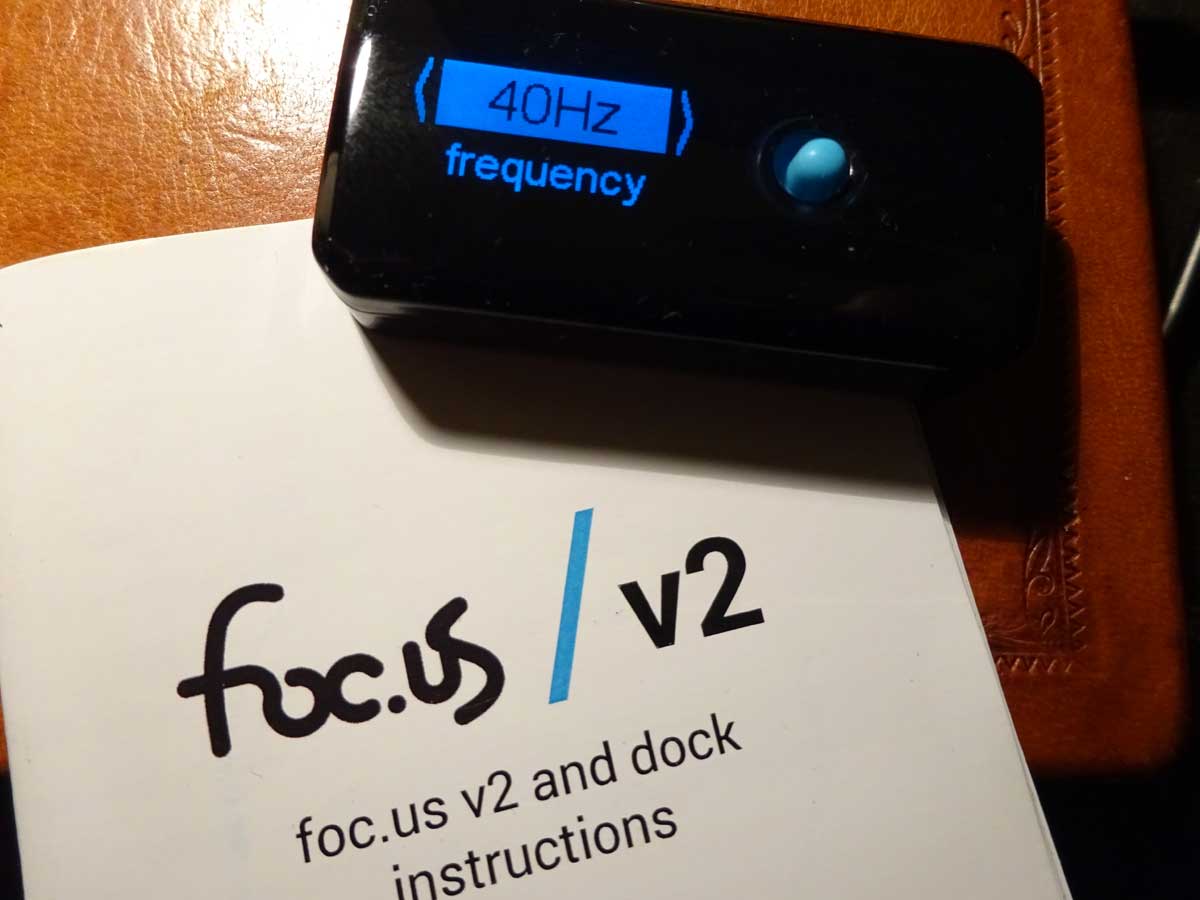
[Update 3/18/19] Exciting news in the fight against Alzheimer’s!
Dr. Tsai has a new lab. Tsai Laboratory
In the new study, researchers added acoustic stimulation that pulsed at the same frequency as the visual stimulation. And when mice — which were bred to develop Alzheimer’s-like symptoms — were exposed to both, researchers saw that the neurons in several of their brains’ key memory circuits chimed in and began humming along at exactly the same frequency.
LA Times https://www.latimes.com/science/sciencenow/la-sci-sn-alzheimers-brain-waves-20190315-story.html
What came next was remarkable and unexpected, even to the authors of the study.
In the wake of the sound and light sessions, an army of newly energized immune cells descended on several areas of the treated brains, including those most affected by dementia. Then they set to work with a vengeance on some neglected housecleaning.
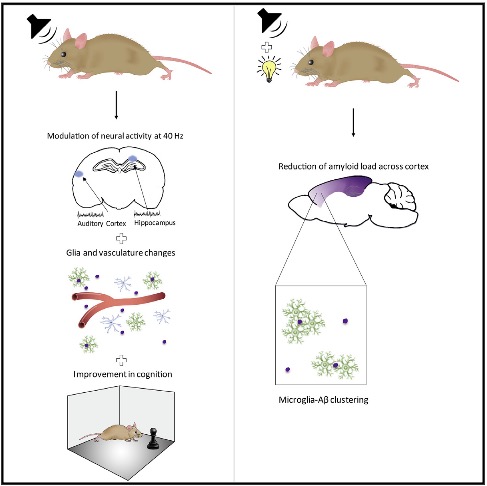
A Possible Alzheimer’s Treatment With Clicks and Flashes? It Worked on Mice (NYT)
Light and sound stimulus therapy generates a buzz in Alzheimer’s research world (LAT)
——–
[Update 2/3/18] Nature reports on updates since the information about the research first emerged. How flashing lights and pink noise might banish Alzheimer’s, improve memory and more
——— Original article
I was first alerted to the story from a December 7 article in the Guardian, “Strobe lighting provides a flicker of hope in the fight against Alzheimer’s“. Researchers from the Picower Institute for Learning and Memory at MIT, working with (let’s call them) ‘Alzehiemer’s mice’, had discovered that flashing a light at 40hz (on-off at 40 times per second) increased gamma wave oscillations in the brain which led to the reduction of Amyloid beta (think, plaque) through the activation of microglia ‘clean-up’ immune cells. Here, let them explain it!
The paper, Gamma frequency entrainment attenuates amyloid load and modifies microglia makes clear that the light-flickering affected the visual cortex, which makes sense, as the light reaches the brain through the eyes. But wait, thinks I, what about tACS (transcranial Alternating Current Stimulation)… haven’t I seen numerous papers implying the ability to ‘entrain’ brain waves with tACS? What if you could increase 40hz Gamma in other parts of the brain? (Google Scholar Search: transcranial alternating, entrain, gamma)
But then I discovered that Radiolab just covered this exact story and it’s totally amazing! Really a must listen. So fun to hear the researcher’s amazement at this accidental (sort of) discovery!
So what’s with the photo of the Foc.us v2 device set up for a 40hz tACS session? Just that…

More about The Picower Institute for Learning and Memory at MIT
Unboxing of the Activadose II tDCS Device with Caputron Starter Kit.
This video shows what is included with the Activadose tDCS Starter Kit from Caputron as well as a quick start guide. For more in depth look at how to use the device or to purchase this device, visit Caputron.com (As mentioned elsewhere on the blog, I have an affiliate relationship with Caputron. If you purchase any product from Caputron using code diytdcs at checkout, you will receive a discount and I will receive an affiliate fee.)
Halo: A headset that makes you learn faster | Should This Exist? (Podcast)
Neuroscientist Daniel Chao created a headset that hacks your brain with electricity so you can learn as fast as a kid again. It’s called Halo, and it helps you learn motor skills faster. Athletes use it; musicians too. But we’re not far from a future when Halo could help anyone master anything. Where will that take us? Host Caterina Fake leads the journey, joined by Comedian Baratunde Thurston and Quartz Editor in Chief Kevin Delaney, who help Daniel future-cast, and see his invention through the future best for humanity.
Physical Medicine and Rehabilitation Non-Invasive Brain Stimulation (NIBS) | John Hopkins
Michael was told he had reached his limit on what he could do. This was not something Michael and his partner, Jason, would accept. They began to look for other options and found Johns Hopkins Physical Medicine and Rehabilitation’s Non-Invasive Brain Stimulation (NIBS) as Michael’s answer to improve. Watch to learn more about Pablo Celnik and his team’s approach to setting Michael on a path to recovery.
John Hopkins Physical Medicine and Rehabilitation
Doc Johnson’s DIY Build | diligent5.org
From a comment to the blog. Doc Johnson shares this beautiful DIY tDCS build. Thanks Doc!
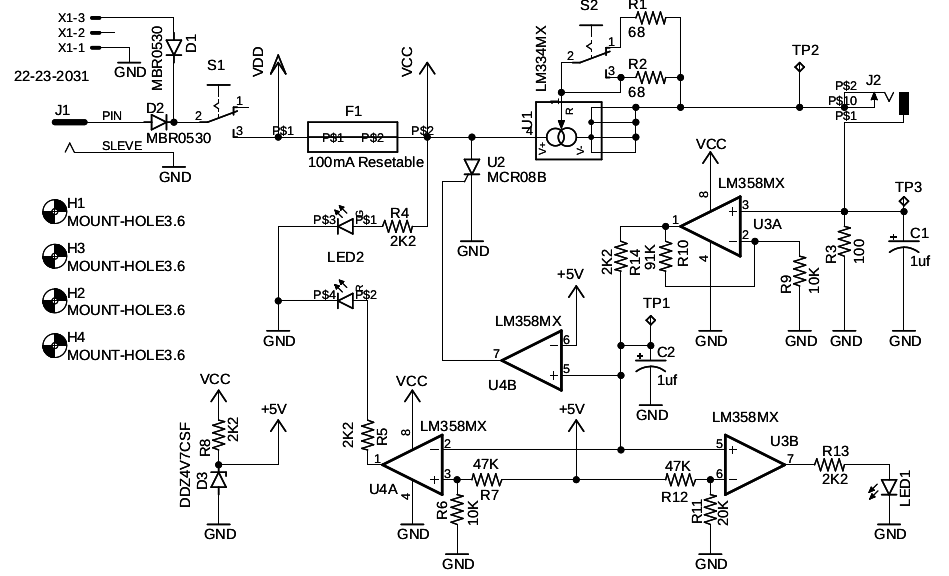
I’m personally just beginning experimenting with TDCS, and as an avid DIYer, I built my own. The open designs I’ve seen seem to be a little short on features (particularly a fail-safe over-current protection), so I decided to use my background as an Electrical Engineer to start from scratch. It might be useful for others who are interested in building their own.
The design incorporates a feature that trips something equivalent to a circuit breaker if more than about 4.8mA of current flows through the electrodes. It should never happen based on the current regulator design, but I’ve seen too many pieces of silicon short out in a way that would be dangerous in this situation. I finished testing the design this weekend, and am quite happy with it. All told, the parts are about $20, not counting the hours spent designing, building, testing, redesigning…
The design and links for how I built the circuit board are located at https://www.diligent5.org/?p=1993 I built it using surface mount components because I like the tighter resistor tolerances available, but theoretically the components (or something equivalent) are available as through-hole components for the less adventurous. Cheers, Doc Johnson
- TDCS Controller Step 2 – Building The Circuit Board
- TDCS Controller Step 3 – Testing the Design
- TDCS Controller Step 4 – Redesign
- TDCS Controller Step 5 – Making Electrodes
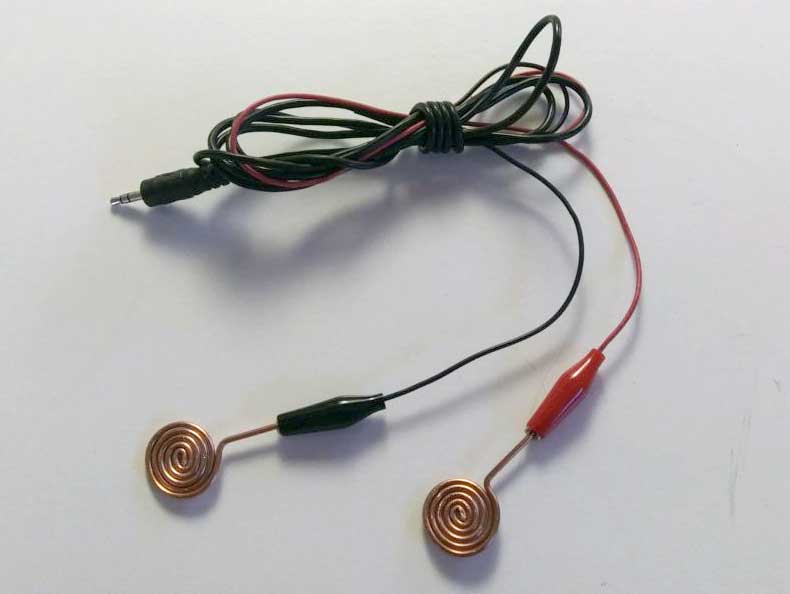
tDCS and Parkinson’s
First of all I need to reiterate that I am not a health professional by any means (I’m a retired musician). I was attracted to tDCS when cognitive enhancement effects were first reported back in 2012. Now years later I’m still not convinced there’s anything more than placebo going on with tDCS as far as cognitive enhancement goes, though as I’ve stated elsewhere on the blog, the research seems more conclusive around tDCS being an effective treatment for depression.
Parkinson’s is a progressive, debilitating, and at present, incurable disease that robs people of a wide variety of function, but especially movement and speech-related abilities. I have a close friend with Parkinson’s so I’ve been following the related tDCS literature. A recent study suggests that tDCS may prove to be an effective way to help with movement issues.
In Effects of Transcranial Direct Current Stimulation (tDCS) Over the Frontal Polar Area on Motor and Executive Functions in Parkinson’s Disease; A Pilot Study researchers at Toyama University Hospital, Japan, found that anodal tDCS improved motor function in patients with Parkinson’s. Note that this was a very small study (9 patients, early in their Parkinson’s). In this blog post I will attempt to present a DIY version of the study protocol.
To the best of our knowledge, this is the first clinical research reporting that tDCS over the FPA successfully improved the motor and non-motor functions in PD patients. These findings suggest that tDCS over the FPA might be a useful alternative for the treatment of PD patients.
The first thing I noticed was that the montage (where to put the electrodes), “tDCS over the frontal polar area (FPA)” was unusual, therefore not easily verified by looking at other studies. The researchers had previously determined that stimulation of the FPA in healthy subjects improved hand dexterity (Cerebral functional imaging using near-infrared spectroscopy during repeated performances of motor rehabilitation tasks tested on healthy subjects). From the paper (my edits, for brevity and clarity in regards my purpose here)…
The stimulation current was delivered … through a pair of saline-soaked sponge electrodes (5 × 7 cm) over the frontal polar area FPA, and occipital area (OPA).
tDCS was applied for 1 week (5 times/week: Monday–Friday).
A constant current of 1.0 mA was delivered for 900 seconds (15 minutes).
During the tDCS protocol, the patients received traditional physical therapy in the upper extremities (stretching and muscle strength exercise) while sitting in a chair.
According to the 10-20 EEG system (pdf), FPA is defined as Fp1 and Fp2, and OPA is positioned near O1 and O2. Digging into the previous study I determined that they used FPZ to target FPA, and OZ to target OPA.
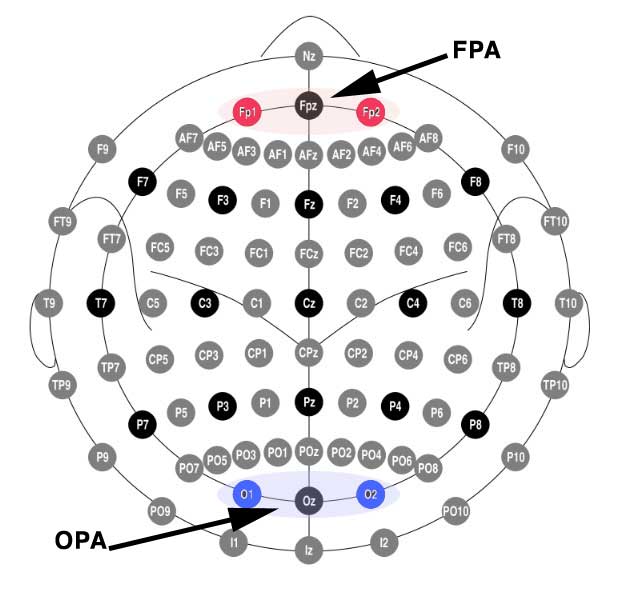
Yes but… what does that look like on a head? Here I’m indicating the electrode targets using the Foc.us placements head model.
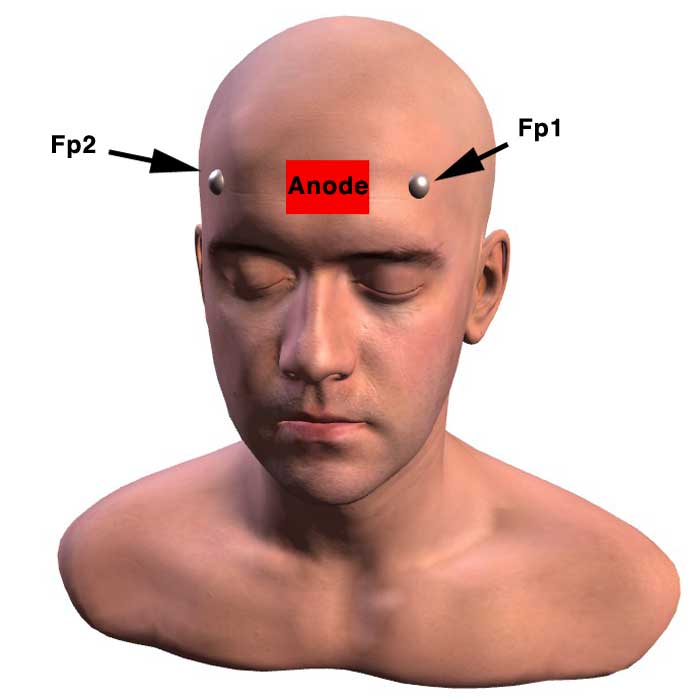
(Above) Anode placed at Fpz to target the frontal polar area (FPA)
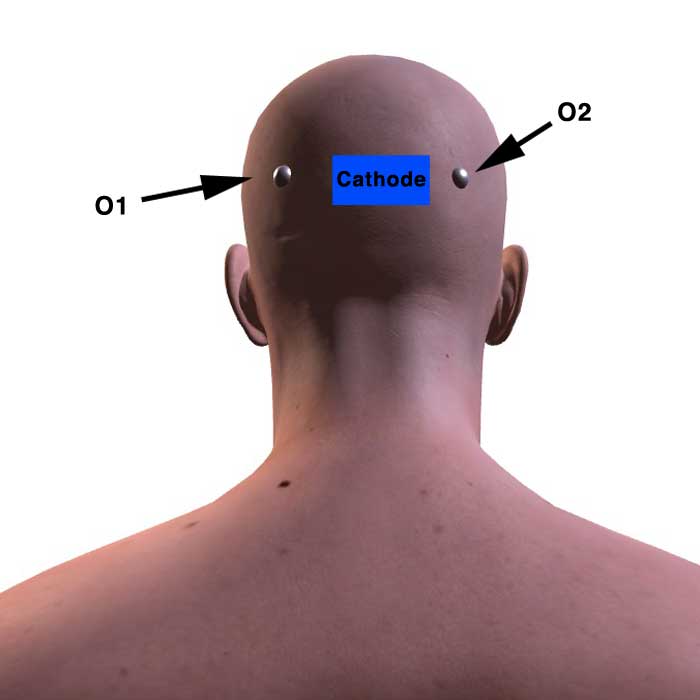
(Above) Cathode placed at Oz to target occipital area (OPA).
So basically, there you have it…
1 mA stimulation, (approx) 2″ x 2″ saline-soaked sponges, for 15 minutes placed at Anode-Fpz and Cathode-Oz, every day for five days. Note that the study participants underwent their usual regimen of physical therapy while the tDCS was being applied.
Am I suggesting you try this? No, I’m not.
I personally do intend to see if this can help my friend whose walking and talking are becoming difficult. For this reason I wanted to be as clear in my understanding of the study as possible.
Caputron Specials
These come up once in a while and I like to alert readers to Caputron specials. I’ll remove the post when I see that the special has ended. Remember to add discount code diytdcs at checkout for additional savings ( I also receive an affiliate fee when you use my discount code). 
Stimulation Excites the Brain to Form Better Memories | NorthwesternU
Not tDCS, but TMS -Transcranial Magnetic Stimulation, another form of TES – Transcranial Electric Stimulation, that is being used both clinically (FDA approved for the treatment of depression) and as a research tool. Unlike tDCS, TMS can be of sufficient power to cause neurons to fire– imagine a finger twitching in response the the activation of the TMS device.
The video describes an experiment where researchers are attempting to improve the quality of memory encoding using TMS. The point of sharing it with you on the blog is to point out how difficult this is in fact to do. tDCS for cognitive enhancement was what initially inspired this blog, and now these six years later, I’m not sure we’re any closer to having a useful tool for cognitive enhancement of any kind, though I am reasonably confident in stating that tDCS for the treatment of depression is at least worth trying. (Other areas of research I’m more optimistic about are tDCS and Aphasia, tDCS and Parkinson’s, and tDCS for the enhancement of physical training. But in all of these the jury is still out, as there is conflicting research results.)
Note as well in the video the elaborate set up for measuring the effect of TMS in the memory study. These are often standardized tests used throughout psychology research. Unfortunately they are often costly and complicated to use. Point being that any sort of DIY cognitive enhancement experiments need to consider how effects will be measured.
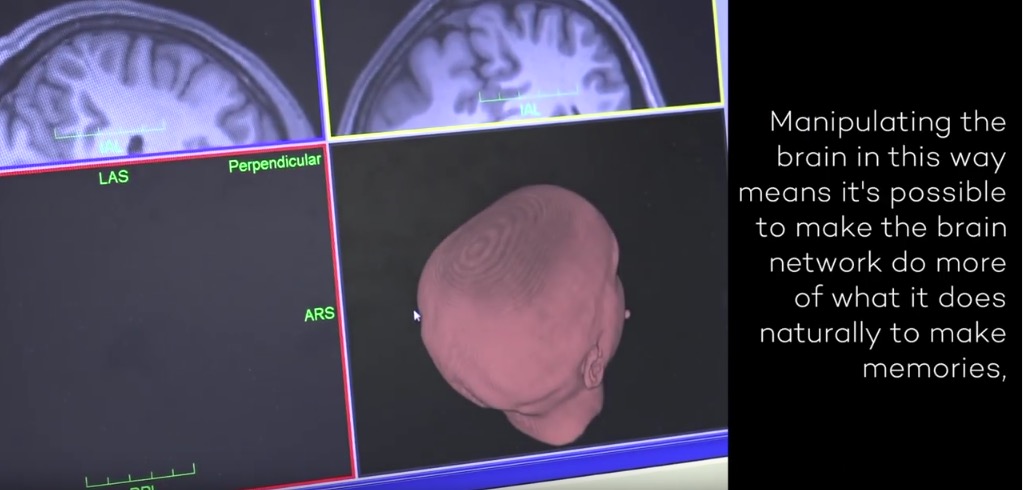
Read more about the research here: Stimulation excites the brain to form better memories
Find the paper here: Selective and coherent activity increases due to stimulation indicate functional distinctions between episodic memory networks
See also: Hippocampal memory encoding and retrieval
Depression treatment technique uses new helmet therapy | BBC News
Updated 9/3/18: TMSuino3 A low-cost arduino-based TMS (transcranial magnetic stimulation) device. 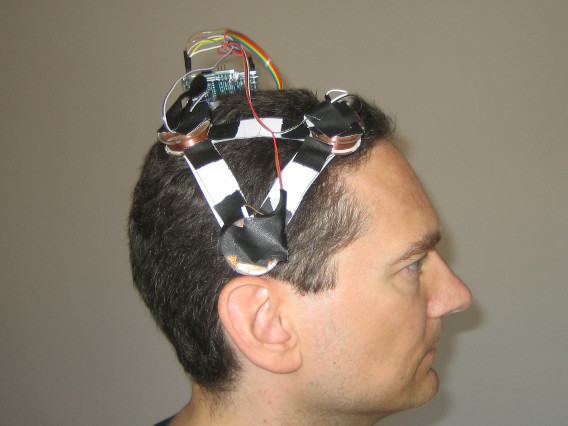
This github project is a step-by-step manual. Anyone with a high school diploma should be able to follow it and build a TMSuino themselves. That’s what I was aiming for. TMSuino’s principle of operation is taken from a scientific paper published in the 1990s. So it is free of valid patent claims. Costs for parts, materials and shipping should be around 150,- dollars/euros. There is no soldering required! Estimated build time is 2 1/2 hours.
A comment on the blog from Martin Mueller informed me of this very interesting new arduino-based TMS device. I’ve also posted a link to the r/diytdcs Reddit page in hopes of hearing feedback from more technically-minded folks. I will update this post as info emerges. TMSuino3 seems to be loosely based on the work of Steen Dissing whose device we looked at in 2015 (see below) where it’s referred to as Transcranial Pulsating Electro Magnetic Fields therapy or t-PEMF.
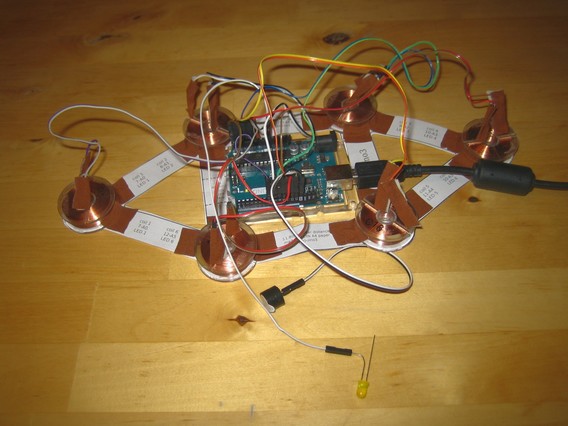
The Introduction to the github article collects the author’s frustrations and suspicions around transparency in the bipolar research community and basically comes away from the experience hypothesizing what sounds like a conspiracy. Wait, big pharma and medical device companies manipulating the market to ensure maximum profit? Either way, he shares an article that confirms Steen Dissing’s frustration in getting his device accepted and adopted for treatment of depression in Denmark. An Inventor’s Triumph and Frustration.
It turns out a medical grade device has been developed and approved for treatment of depression in Denmark. The Re5, made by Navamedic. There are a collection of research papers linked to at their site.
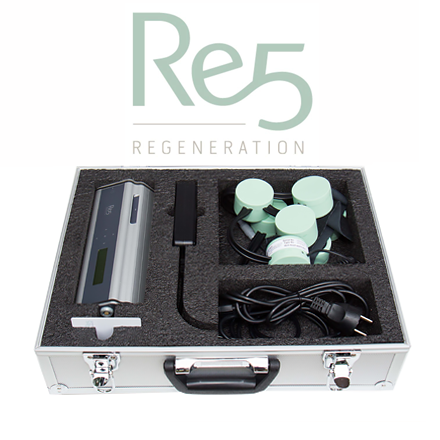 ————————– Original 2015 article.
————————– Original 2015 article.
Thanks to reader Jerico for alerting me to this. Transcranial Pulsating Electro Magnetic Fields therapy is new to me. It does not seem to be experiencing anywhere near the level of research activity that is going on around tDCS. Some of the research I’m finding dates from 2001 (though the BBC article the quote is from and linked to below is from 2014). But just to have it on our radar, and because the helmet looks so cool…
“The helmet is amazing,” said Annemette Ovlisen, a graphic artist who suffered recurrent depression for 16 years and a participant in the Hillerod trials.
It’s like the fog lifts. It was like somebody hit the reset button.”The device contains seven coils that deliver a dose of Transcranial Pulsating Electro Magnetic Fields (T-PEMF) to brain tissues.The pulses are so minute that the patient cannot detect any sensation, and the only side effect so far is occasional “tiny” nausea that immediately disappears after treatment.
Prof Steen Dissing, of Copenhagen’s Faculty of Health Sciences is the helmet’s principal architect.
He said: “The device mimics electrical fields in the brain, and triggers the body’s own healing mechanism.”
The pulses activate capillaries in the brain, which form new blood vessels and secrete growth hormones.
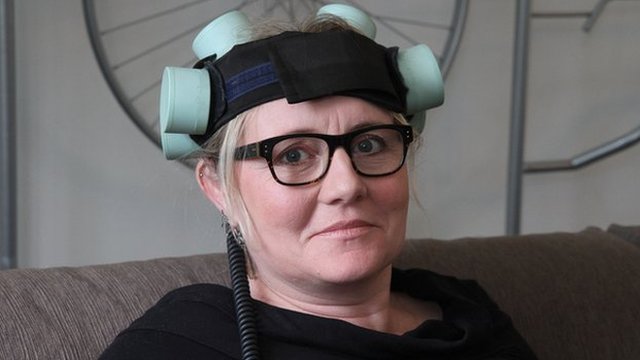
I’ts like somebody hit the reset button and I was back to normal.
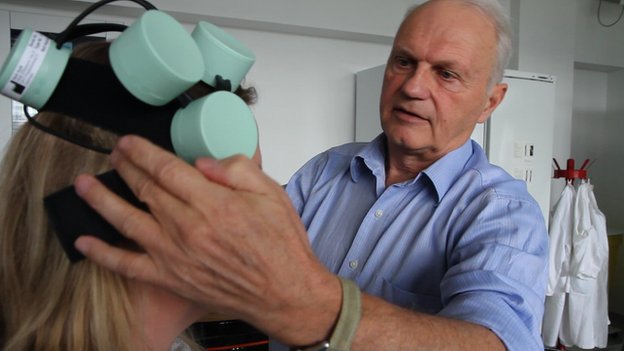
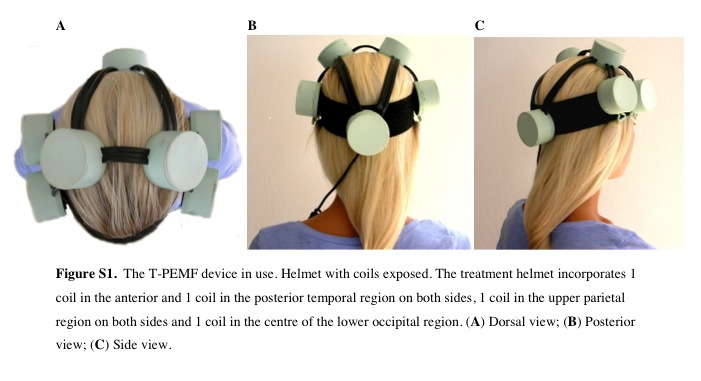 via BBC News – Depression treatment technique uses new helmet therapy.
via BBC News – Depression treatment technique uses new helmet therapy.
Robin From Caputron Demonstrating Activadose II
Robin is the founder of Caputron which is a distributor of tDCS and other TES devices. Here he demonstrates the Activadose II tDCS device. For reasons mentioned elsewhere on the blog, this is the device I recommend (this is an FDA approved – for Iontophoresis – device. I’d suggest the 2mA model with the 3×3 sponge set – this is closest to what most research studies use). Caputron provides DIYtDCS readers a generous discount (I also earn a referral fee) when you use discount code ‘diytdcs’ at checkout (for any product offered by Caputron). I interviewed Robin back in 2015 when he was first getting started. Check out that post here.

